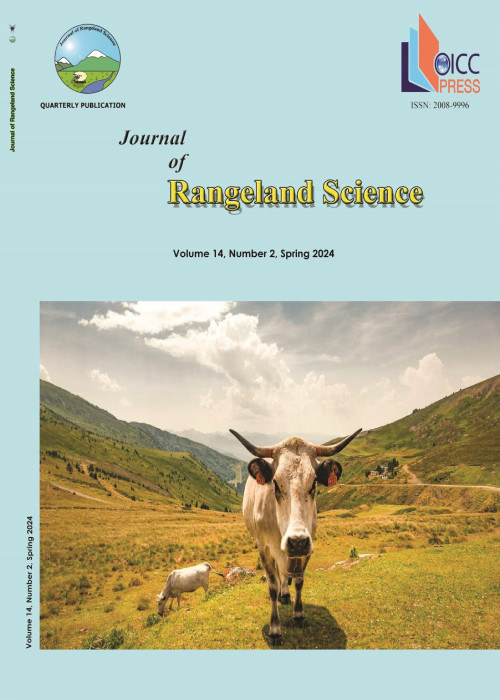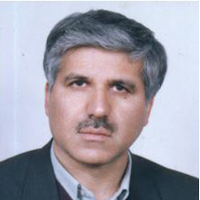Multivariate Statistical Method for Assessing Livestock Grazing Effects on Soil and Vegetation in Steppe Rangelands (Case Study: Steppe Rangelands of Saveh)
Author(s):
Abstract:
This study aims to assess the effect of grazing intensity on vegetation structure, soil nutrient concentrations and soil physical properties. The study was carried out in steppe rangelands of Saveh, Markazi province, Iran. Four sites with four grazing intensities including very high, high, moderate and non-grazed with the same ecological conditions were selected. To study various vegetation and soil parameters in each range site, a reference area was selected. Then, sampling was performed by randomized systematic method in reference areas. Vegetation characteristics, soil physical properties, bulk density, infiltration rate, soil texture and chemical constituents including nitrogen, phosphorus, potassium, pH, EC and organic carbon were measured. Principal component analysis was performed on a dataset with 22 variables to determine the effect of grazing intensity on vegetation structure and soil properties. Results indicated that the first three axes explained the total variation. The variables of potassium, phosphorous, bulk density, class I, class II, clay, field capacity, infiltration, Peganum harmala, Salsola laricina, Artemisia sieberi and perennial forbs had significant correlations with the first axes and explained a 74.27% variation. For the second components, silt, sand and perennial grasses were more important traits and explained a 15.5% variation. In non-grazed and moderate grazed sites, there were more canopy cover of both Artemisia sieberi and Salsola laricina, and for high grazing sites, there were plants of class III such as Noaea mucronata and Peganum harmala. The grazing intensity was associated with lower values of infiltration, clay percent and field capacity and higher values of bulk density, potassium, phosphorous and sand percent. Therefore, vegetation structure and soil properties were changed by the interaction between grazing intensity, soil properties and vegetation structure. The results suggested that excluding grazing livestock on the arid steppes has a great potential to restore vegetation and soil. Therefore, it must be encouraged as an alternative to stop further degradation and to combat desertification in arid and semi arid ecosystems.
Keywords:
Language:
English
Published:
Journal of Rangeland Science, Volume:2 Issue: 3, Spring 2012
Page:
605
magiran.com/p1055986
دانلود و مطالعه متن این مقاله با یکی از روشهای زیر امکان پذیر است:
اشتراک شخصی
با عضویت و پرداخت آنلاین حق اشتراک یکساله به مبلغ 1,390,000ريال میتوانید 70 عنوان مطلب دانلود کنید!
اشتراک سازمانی
به کتابخانه دانشگاه یا محل کار خود پیشنهاد کنید تا اشتراک سازمانی این پایگاه را برای دسترسی نامحدود همه کاربران به متن مطالب تهیه نمایند!
توجه!
- حق عضویت دریافتی صرف حمایت از نشریات عضو و نگهداری، تکمیل و توسعه مگیران میشود.
- پرداخت حق اشتراک و دانلود مقالات اجازه بازنشر آن در سایر رسانههای چاپی و دیجیتال را به کاربر نمیدهد.
In order to view content subscription is required
Personal subscription
Subscribe magiran.com for 70 € euros via PayPal and download 70 articles during a year.
Organization subscription
Please contact us to subscribe your university or library for unlimited access!



